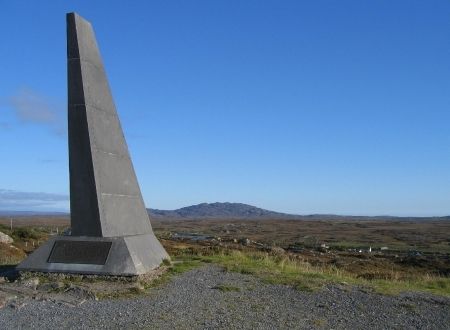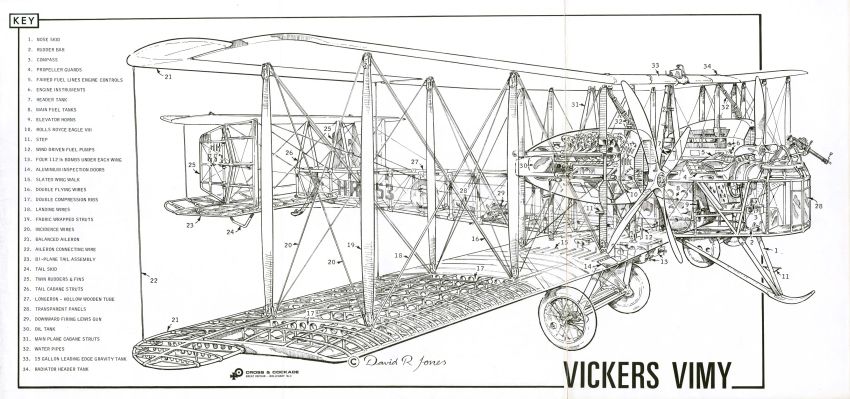Designed by Reginald Kirshaw "Rex" Pierson, who was chief designer of Vickers Limited (Aviation Department) in Leighton Buzzard, the Vickers Vimy was a two-engined biplane bomber which came too late to play a role in WWI (three aircraft actually made it to France before the cessation of hostilities, but were never deployed in combat missions), but which equipped many RAF squadrons post-Great War and had a successful career in a civilian role. It is probably best remembered as the mount of Captain Alcock and Lieutenant Colonel Brown, pilot and navigator respectively, on their memorable transatlantic flight in 1919.

The Vimy prototypes were equipped with a variety of engines, but the production aircraft the RAF received had the 360HP (270kW) Rolls-Royce Eagle VIII engines. Main characteristics:
Empty weight: 7,104 lb (3,222 kg)
Max. takeoff weight: 10,884 lb (4,937 kg)
Maximum speed: 100 mph (161 km/h)
Range: 900 mi (1,448 km)
Service ceiling: 7,000 ft (2,134 m)
The armament consisted of two .303 in (7.7 mm) Lewis machineguns in Scarff rings, one in the nose and another one in mid-fuselage. Bombload was 2,476 lb (1,123 kg).
Cutaway drawing:

Magnificent huh? Such a wonderful piece of engineering, now almost a century old!
Some quick anecdotal facts before Outlaw Mike calls it quits. The Vimy was named for the Battle of Vimy Ridge, which took place from 9 to 12 April 1917, and in which the four division strong Canadian Corps and one British division, with overall commander the later Field Marshal Sir Julian Byng, were pitted against three German divisions of the German Sixth Army under Von Falkenhausen. It was an Allied victory.
Although Alcock and Brown's Vimy crashed in a bog near Clifden - it was a miracle they escaped unhurt - the plane was rebuilt and is now on display in the London Science Museum.
Vickers would merge with Armstrong-Whitworth in 1927, and the resulting company would ultimately become a part of BAC in 1960.
The brand name Vickers however would continue to be used until 1965. Perhaps the most inspiring Vickers creation would be the Vickers Valiant, the most conventional design among the three bomber types of Britain's airborne nuclear deterrent force. But even so, it's amazing that a mere 34 years separate the Vimy from the Valiant, which made its first flight in 1951.
MFBB.
No comments:
Post a Comment